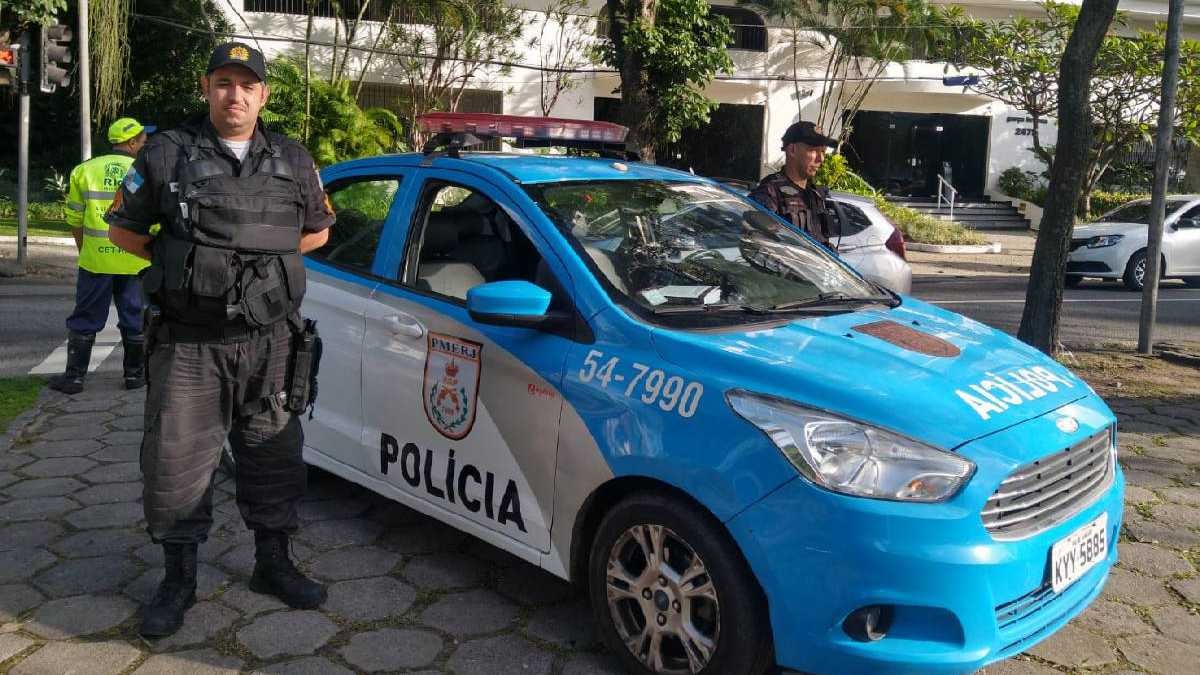RIO DE JANEIRO, BRAZIL – Rio de Janeiro, a city with chronic problems of police violence, will begin to implement cameras in the uniforms of agents, a measure with encouraging results in Brazil but by no means a “panacea” against abuses, according to experts.
According to the Monitor of Violence project, Brazil has one of the police that kills and dies the most in the world: in 2021, there were more than 6,100 fatalities in police operations, and 183 officers were killed.
“The police act with little transparency in Brazil. When there is a shooting, and someone is killed, the immediate response is: ‘We were attacked during an operation, we responded and killed the aggressors’ (…) With few exceptions, there is no accountability,” argues César Muñoz, senior Brazil researcher at Human Rights Watch.

“Body cameras can be useful both to document the actions of the police and to protect them from unfounded accusations,” he adds.
Measuring about 8 cm by 6 cm, depending on the model, the cameras attached to the chest of uniforms are increasingly used in states such as São Paulo and Santa Catarina. The first results look encouraging.
According to official data, confrontations have been reduced by 87% among units using cameras since 2021 in São Paulo, which has also implemented other measures, such as using non-lethal weapons.
In Santa Catarina, an academic study found that the devices reduced the use of police force by more than 60% since 2019.
The presence of the cameras also improved the recording of some crimes, such as domestic violence, which were reported by officers more accurately.
EYES ON JACAREZINHO
Rio de Janeiro will soon begin to deploy some 8,000 cameras in the patrolling of some neighborhoods, from the affluent Copacabana to favelas such as Maré or Jacarezinho, informed the State Police, which initially shuffled the date to May 16.
Jacarezinho was the scene a year ago of the most lethal police operation in Rio’s history: a raid against drug trafficking that left 27 “suspects” and one policeman dead.
If the agents had been wearing cameras, these would have helped solve several of the deaths, “even to the policemen’s benefit,” prosecutor André Cardoso, head of the investigations that culminated in the indictment of four policemen and two traffickers, told news portal G1.
“When you look for evidence, you try to assemble the puzzle, reconstruct the situation. If you have a film, you don’t need anything else,” said Cardoso, who considers cameras “essential”.
They would also help gather evidence on other complaints that the Public Defender’s Office has frequently received in Jacarezinho: the occupation and looting of homes by on-duty police, as documented by a resident with hidden cameras in her apartment.
However, “the cameras themselves are not a panacea. They have to be part of a broader policy,” including more training and psychological support for police, and independent investigations, warns HRW’s Muñoz.
LIMITATIONS
In Latin America, this tool has also been applied in countries such as Mexico to combat corruption among its officers and in Chile to monitor the performance of its carabineros. Colombia has announced a pilot plan in Bogota.
In Brazil, their success will depend partly on how they are applied, says Melina Risso, research director of the Igarapé Institute, specializing in public security.
“Will the camera be on 24 hours, or is it triggered? By whom? By the policeman himself? Who supervises the recordings? How long are the images stored, and what is their chain of custody like? How is the privacy of policemen and others protected?” asks Risso.
In São Paulo’s program, a soundless, lower-quality recording is automatically triggered during the entire shift of the police officer, who must activate a second, higher-quality “intentional” recording when called into action.
In the same city, the State Police explained that the cameras would also record automatically, and the images would be stored for about 90 days, among other protocols that will be adjusted as the program is implemented.
With information from Semana

